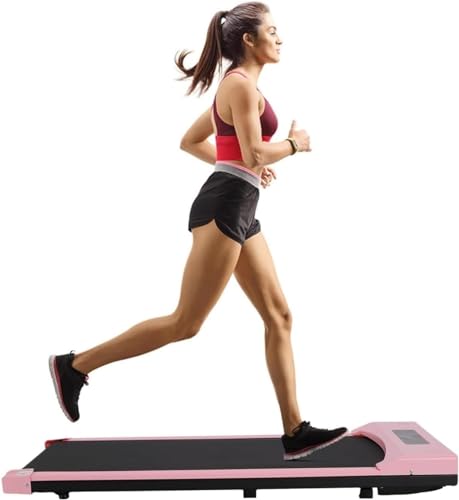Electric Treadmills for Walking: A Comprehensive Guide
As health and fitness continue to get significance in everyday life, lots of people are turning to electric treadmills as a practical alternative for satisfying their walking requirements. These makers are popular for their convenience and versatility, offering a myriad of advantages to users of all ages and fitness levels. This post dives into the key elements of electric treadmills for walking, exploring their functions, benefits, and ideas on how to choose the right one.
Understanding Electric Treadmills
Electric treadmills, typically equipped with a motor, are designed for walking, running, and running. These machines offer a controlled environment for workout that can be utilized regardless of external weather condition conditions. Features can vary considerably in between designs, but usually, electric treadmills featured different settings for speed and incline, allowing users to tailor their workouts.
Basic Components of an Electric Treadmill
- Motor: The electric motor powers the moving belt and enables users to walk or run without having to propel themselves.
- Belt: The walking surface area is generally made of durable, flexible products designed for convenience and security.
- Display Console: Most treadmills feature a digital user interface that tracks time, range, speed, calories burned, and often heart rate and incline.
- Controls: Treadmills include manual or electronic controls to change speed and incline settings.
- Security Features: Many models include an emergency stop button, handrails, and a security key that can be taken out if the user slips.
Advantages of Using Electric Treadmills for Walking
Walking utilizing an electric treadmill provides many advantages, making it an attractive alternative for numerous fitness enthusiasts, beginners, and those seeking rehab. Here are some crucial advantages:
1. Convenience and Accessibility
- With an electric treadmill at home, users can work out whenever they select. This eliminates barriers connected to weather, take a trip, or health club hours.
2. Variety of Workouts
- Electric treadmills often come with predefined programs, allowing users to differ their workout routines. They can also incline to replicate hill walking, improving the difficulty.
3. Security
- Walking inside your home reduces the threat of accidents connected with outside walking, like falls, unequal surfaces, or contact with automobiles.
4. Measurable Progress
- Treadmills offer metrics that reveal users how much progress they have made. This data can be incredibly inspirational.
5. Joint-friendly
- Lots of modern electric treadmills are designed with cushioning to minimize the impact on joints, making them perfect for people with mobility problems or those recuperating from injuries.
How to Choose the Right Electric Treadmill
Picking the ideal electric treadmill for walking depends on a number of factors. Below is a checklist to guide prospective buyers:
1. Budget
- Electric treadmills can range from budget designs to high-end choices. Establishing a budget is important before exploring features.
2. Size
- Consider the space offered for the treadmill. Foldable designs might appropriate for smaller sized homes.
3. Motor Power
- A motor with a minimum of 2.0 CHP (Continuous Horse Power) is ideal for walking. The more powerful the motor, the better the treadmill can manage continual use.
4. Features
- Search for essential functions like:
- Adjustable incline levels
- Integrated exercise programs
- Heart rate displays
- Quality display and controls
5. Service Warranty and Customer Service
- A good guarantee period shows producer self-confidence. Constantly examine client service reviews for dependability.
Advised Features to Look For:
- Cushioned Deck Technology: This reduces joint stress.
- Portability: Foldable design with wheels for simple storage.
- Home entertainment Features: Built-in speakers, Bluetooth connection, or tablet holders for home entertainment throughout workouts.
- Heart Rate Monitor: An excellent addition for tracking exertion levels throughout workouts.
Typical FAQs About Electric Treadmills for Walking
1. Can I stroll on any treadmill?
Yes, but walking-specific treadmills often have functions that cater to decrease speeds, stability, and comfort. Not all treadmills are designed for walking alone.
2. The length of time should I walk on a treadmill?
It depends on personal goals and fitness levels, however starting with 20-30 minutes a day is frequently recommended, gradually increasing period as physical fitness levels improve.
3. Are electric treadmills noisy?
Many modern electric treadmills are designed with reduced sound. Nevertheless, some designs might be louder than others, so checking out evaluations about this element ahead of time can be practical.
4. How do I preserve my treadmill?
Routine upkeep consists of oiling the belt, cleaning up the deck, and inspecting the motor. Refer to the user manual for particular maintenance schedules customized to your design.
5. Can electric treadmills assist with weight-loss?
Yes, constant walking on a treadmill can significantly add to weight loss when integrated with a well balanced diet. Caloric burn increases with speed and incline modifications.
Electric treadmills for walking are more than simply convenience-- they represent a commitment to health, fitness, and well-being. Selecting the right model includes thinking about a number of aspects such as budget, features, and individual physical fitness goals. With Budget-Friendly Electric Treadmills , people can take pleasure in a versatile, safe, and efficient method to incorporate exercise into their daily routines. Whether for leisure or specific fitness goals, an electric treadmill can make a substantial difference in one's health journey.

